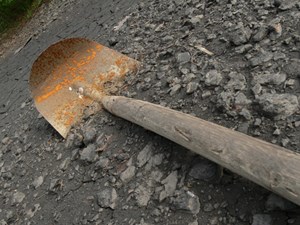Common Ground Alliance: 55% of underground utility damage caused by professional contractors
(UI) – In observance of April as National Safe Digging Month, Common Ground Alliance (CGA) – the national association dedicated to protecting underground utility lines, people who dig near them, and their communities – reminds professional excavators, landscapers, contractors and anyone else who breaks ground to contact 811 before they dig.

Digging without knowing the approximate location of underground utilities can result in serious injury, inconvenient service disruptions, costly fines and repairs and even death when gas, electric, communications, water and sewer lines are damaged.
According to CGA’s annual Damage Information Reporting Tool (DIRT) Report, more than half of annual reported damages (55.3%) were caused by professional contractors. The most common root cause of these damages was “no notification made to the 811 center,” meaning the damage could have been avoided if excavators contacted 811 to have utility lines marked prior to breaking ground.
This trend has been consistent year-over-year and reflects deeper challenges in the efficiency of the 811 system. CGA’s Next Practices Initiative has highlighted the need for the 811 system to be more reliable for all stakeholders, as well as the importance of excavators continuing to use 811 consistently and effectively. To help drive this change, CGA recently announced a new tagline for 811: “SAFETY IS IN YOUR HANDS. EVERY DIG. EVERY TIME,” which serves to emphasize the importance of consistent use of 811 before every digging project.
Contacting 811 and following safe digging practices holds value for excavators beyond avoiding serious injury and fines—it can be a way for excavators to stand out among their competitors. A recent national survey of homeowners conducted by CGA revealed that, among respondents planning to hire a contractor for a digging project in the next year, 82% said a contractors’ usage of the 811 system is important. By contacting 811 before every dig and prioritizing damage prevention, contractors can demonstrate to potential customers that safety is their priority.
Professional excavators and others who break ground—including work like resurfacing, installing, staking, ripping, grinding and tiling—are obligated to contact 811 to have utility lines marked before excavating. After 811 is contacted, professionals must follow all necessary safe digging procedures to ensure that a line is not struck during excavation.
This includes waiting the appropriate time for lines to be marked, potholing to confirm the location of buried utilities and hand digging within the tolerance zone. If a jobsite is not located in the required time, excavators should contact their local 811 center or the utility company to confirm that the jobsite is clear to dig.
Excavators should also review and implement CGA Best Practices to ensure that excavation is done both safely and in the most efficient way possible for the damage prevention system to work properly. Some Best Practices for excavators while on the jobsite include white-lining the planned excavation area, requesting pre-excavation meetings with facility owner/operators for large projects and documentation of locate marks.
Related News
From Archive

- Glenfarne Alaska LNG targets late-2026 construction start for 807-mile pipeline project
- U.S. water reuse boom to fuel $47 billion in infrastructure spending through 2035
- $2.3 billion approved to construct 236-mile Texas-to-Gulf gas pipeline
- Major water pipe break in Puerto Rico hits over 165,000 customers
- Potomac River Tunnel project enters construction phase beneath Washington, D.C.
- Pennsylvania American Water launches interactive map to identify, replace lead water service lines
- Trump's tariffs drive $33 million cost increase for Cincinnati sewer project
- Utah city launches historic $70 million tunnel project using box jacking under active rail line
- Tulsa residents warned after sewer lines damaged by boring work
- Fatal trench collapse halts sewer construction in Massachusetts; two workers hospitalized



Comments